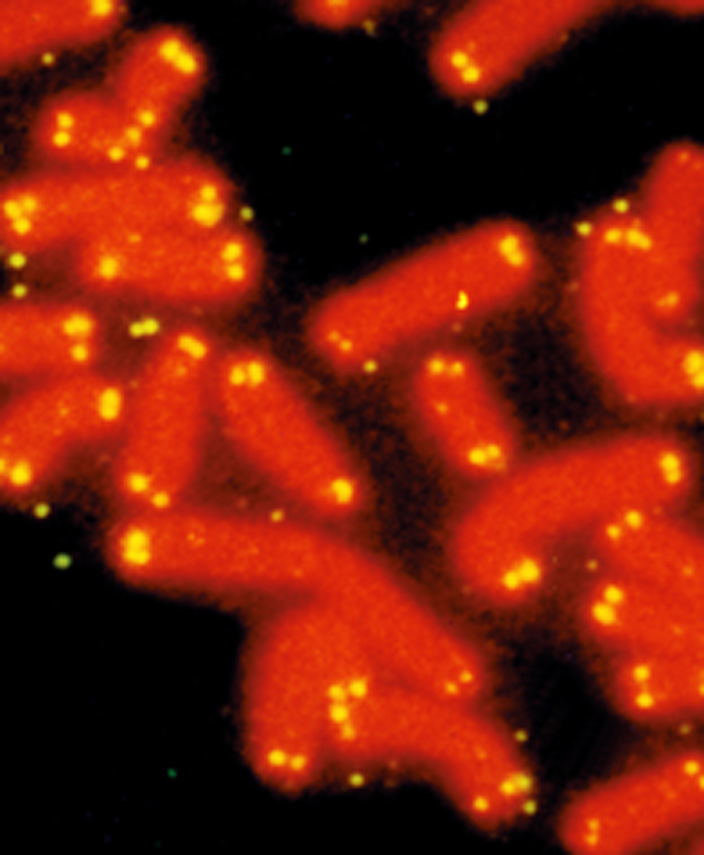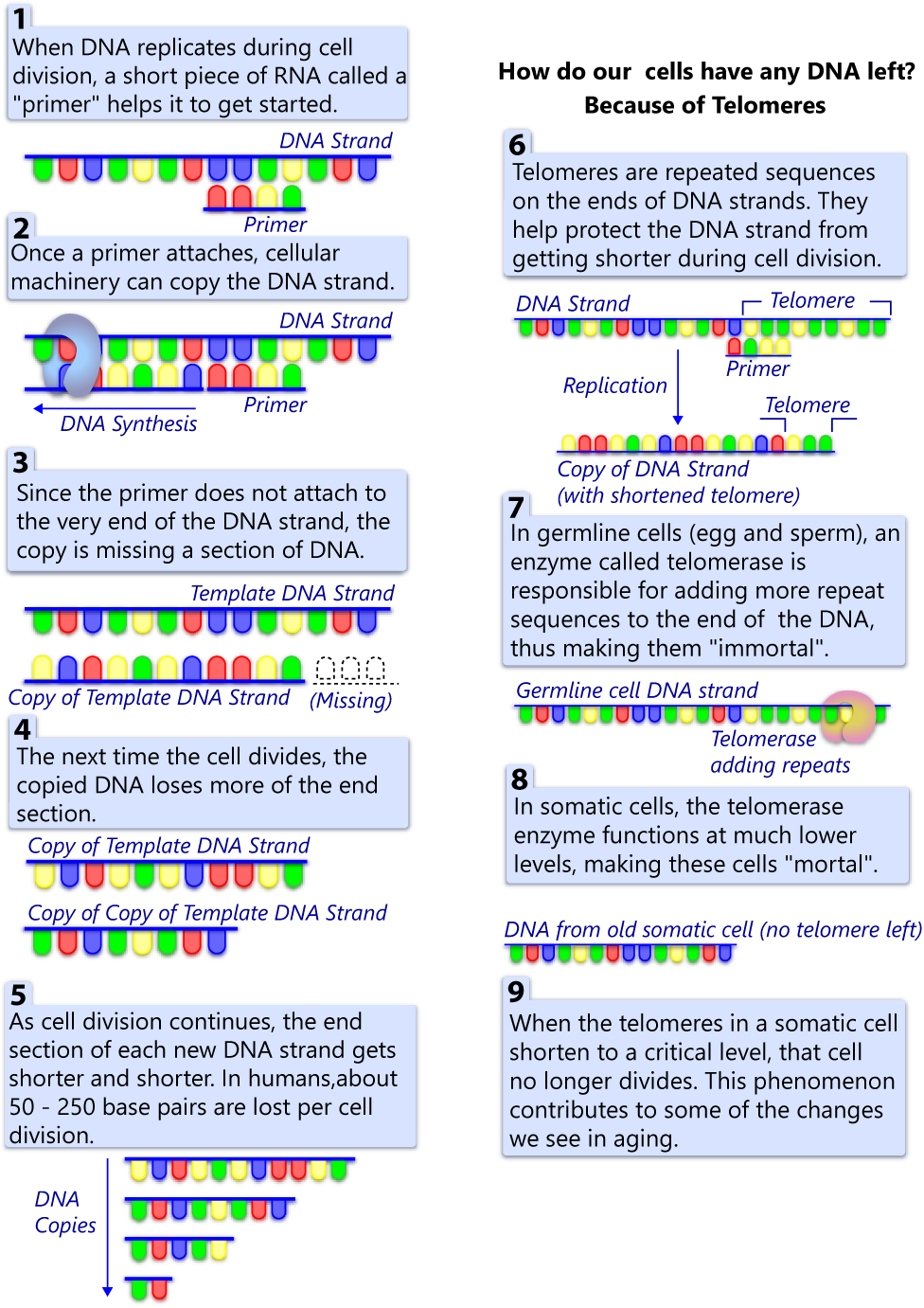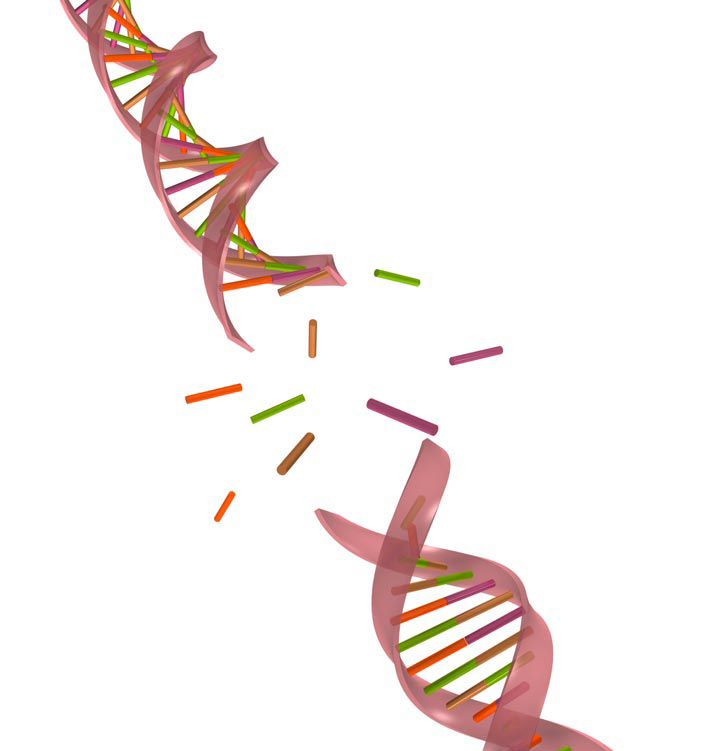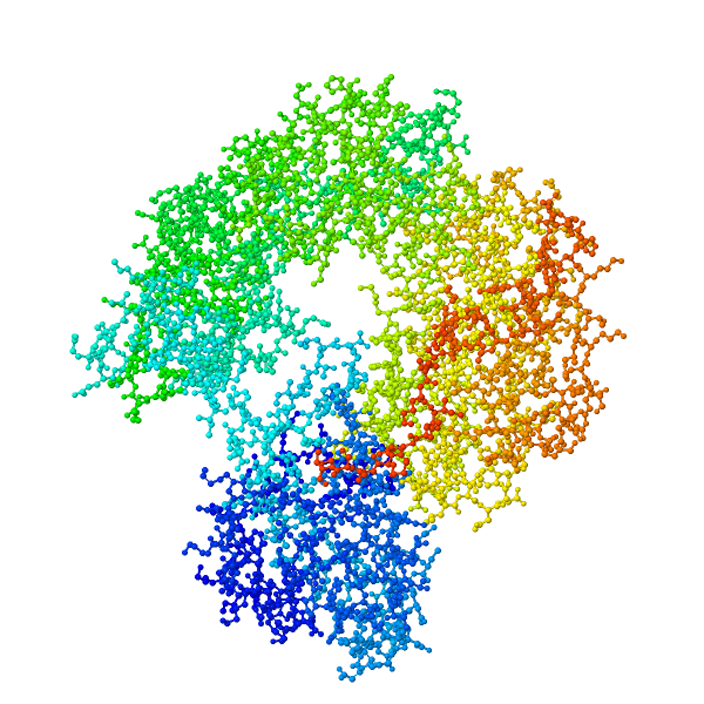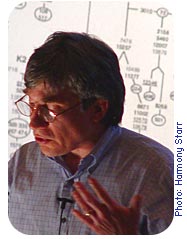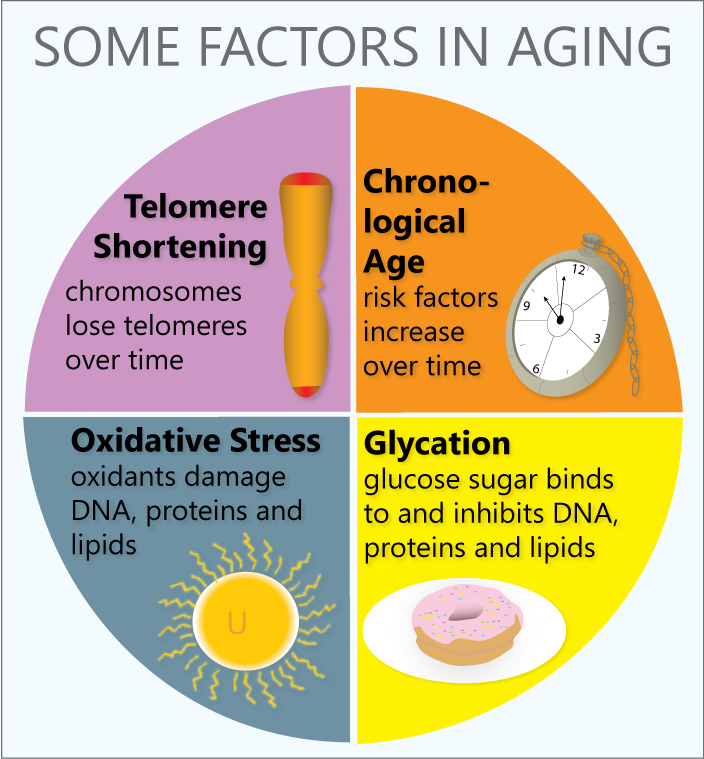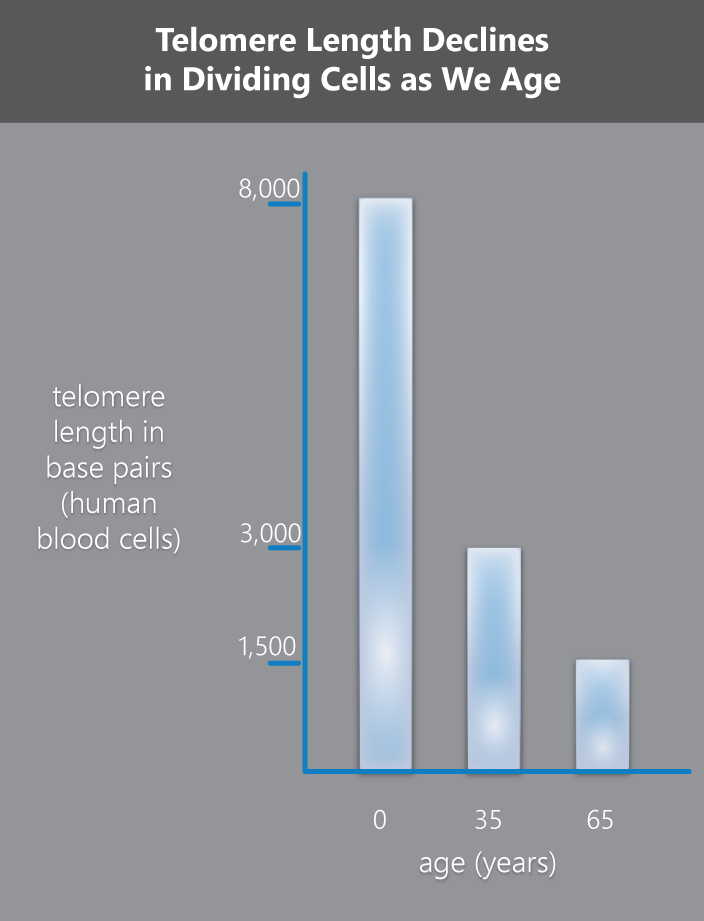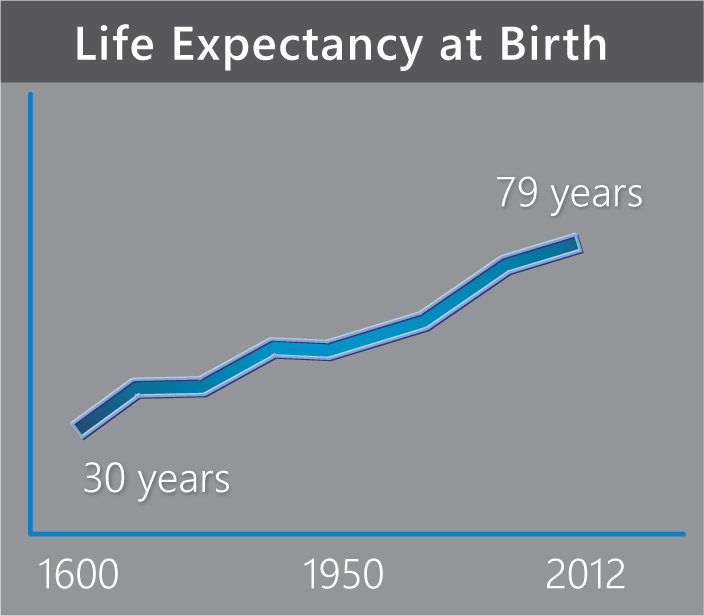Some long-lived species like humans have telomeres that are much shorter than species like
mice, which live only a few years. Nobody knows why. But it's evidence that telomeres
alone do not dictate lifespan.
Cawthon's study found that when people are divided into two groups based on telomere length,
the half with longer telomeres lives an average of five years longer than those with shorter telomeres.
This study suggests that lifespan could be increased five years by increasing the length of telomeres
in people with shorter ones.
People with longer telomeres still experience telomere shortening as they age. How many
years might be added to our lifespan by completely stopping telomere shortening? Cawthon
believes 10 years and perhaps 30 years.
After age 60, the risk of death doubles every 8 years.
So a 68-year-old has twice the chance of dying within a year compared with a 60-year-old.
Cawthon's study found that differences in telomere length accounted for only 4% of
that difference. And while intuition tells us older people have a higher risk of death,
only 6% is due purely to chronological age. When telomere length,
chronological age, and gender are combined (women live longer than men), those factors
account for 37% of the variation in the risk of dying over age 60. So what causes
the other 63%?
A major cause of aging is "oxidative stress." It is the damage to DNA, proteins, and lipids
(fats) caused by oxidants, which are highly reactive substances containing oxygen.
These oxidants are produced normally when we breathe, and also result from inflammation,
infection, and consumption of alcohol and cigarettes. In one study, scientists exposed worms
to two substances that neutralize oxidants, and the worms' lifespan increased an average 44%.
Another factor in aging is "glycation." It happens when glucose, the main sugar we use as energy,
binds to some of our DNA, proteins, and lipids, leaving them unable to do their jobs. The
problem becomes worse as we get older, causing body tissues to malfunction, resulting in
disease and death. Glycation may explain why studies in laboratory animals indicate
that restricting calorie intake extends lifespan.
Most likely oxidative stress, glycation, telomere shortening, and chronological age
along with various genes all work together to cause aging.
